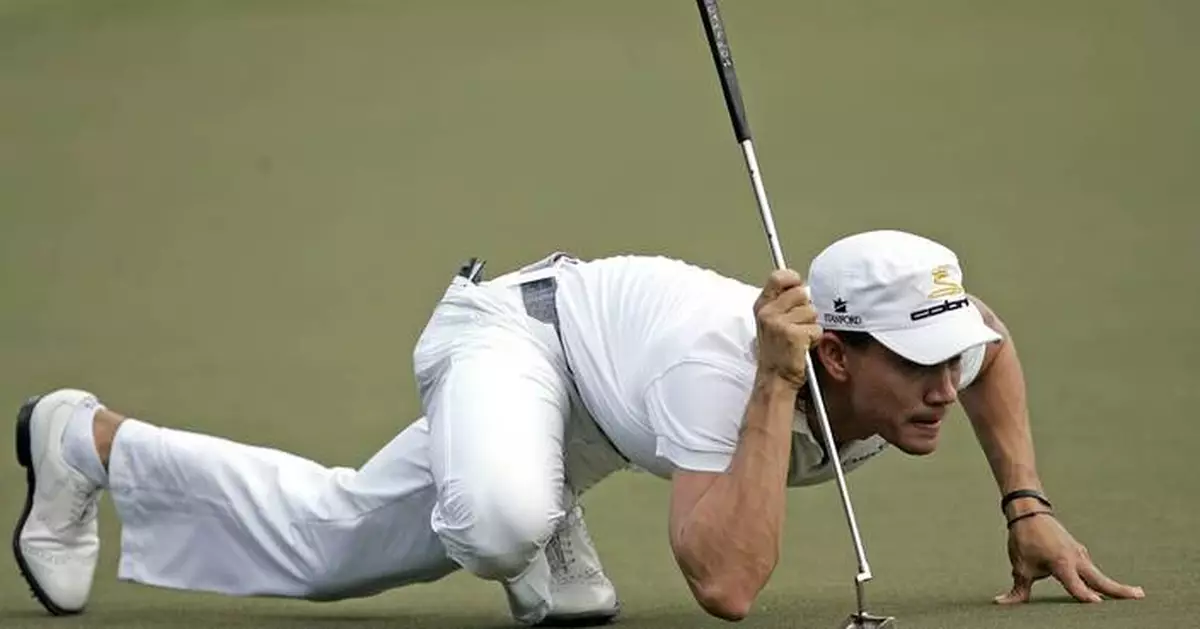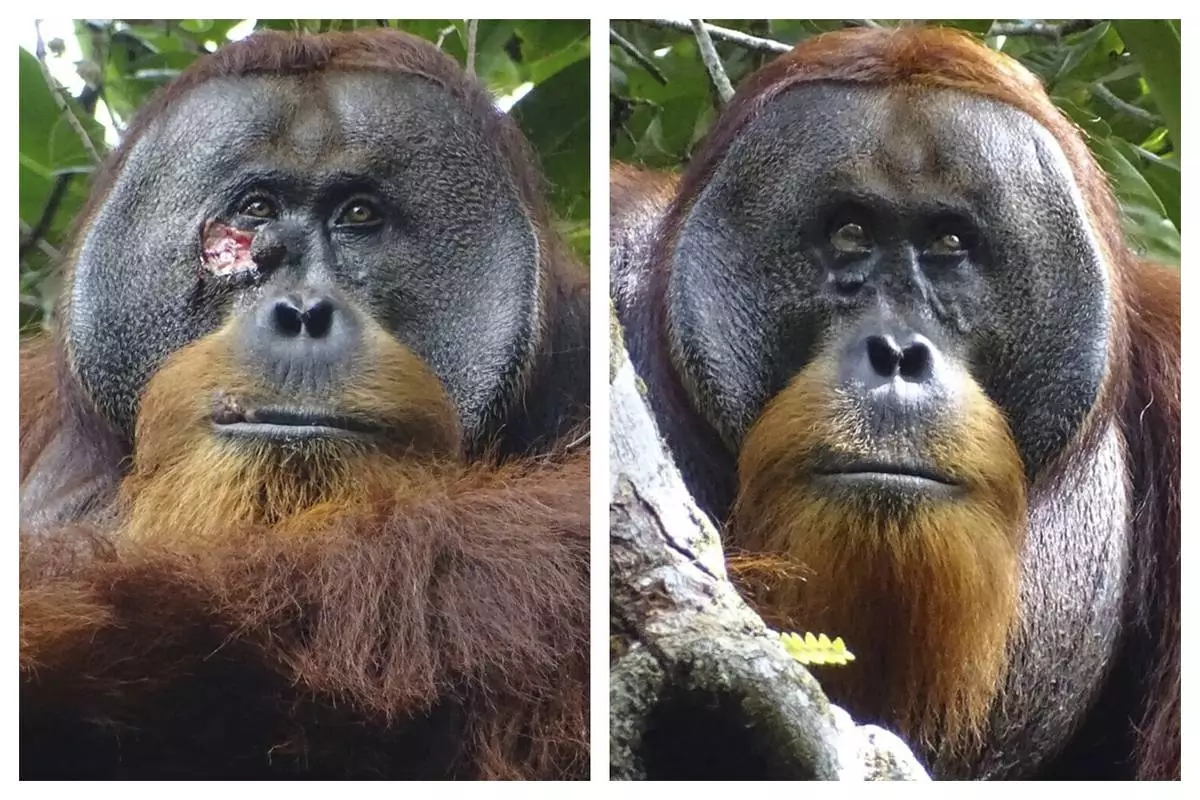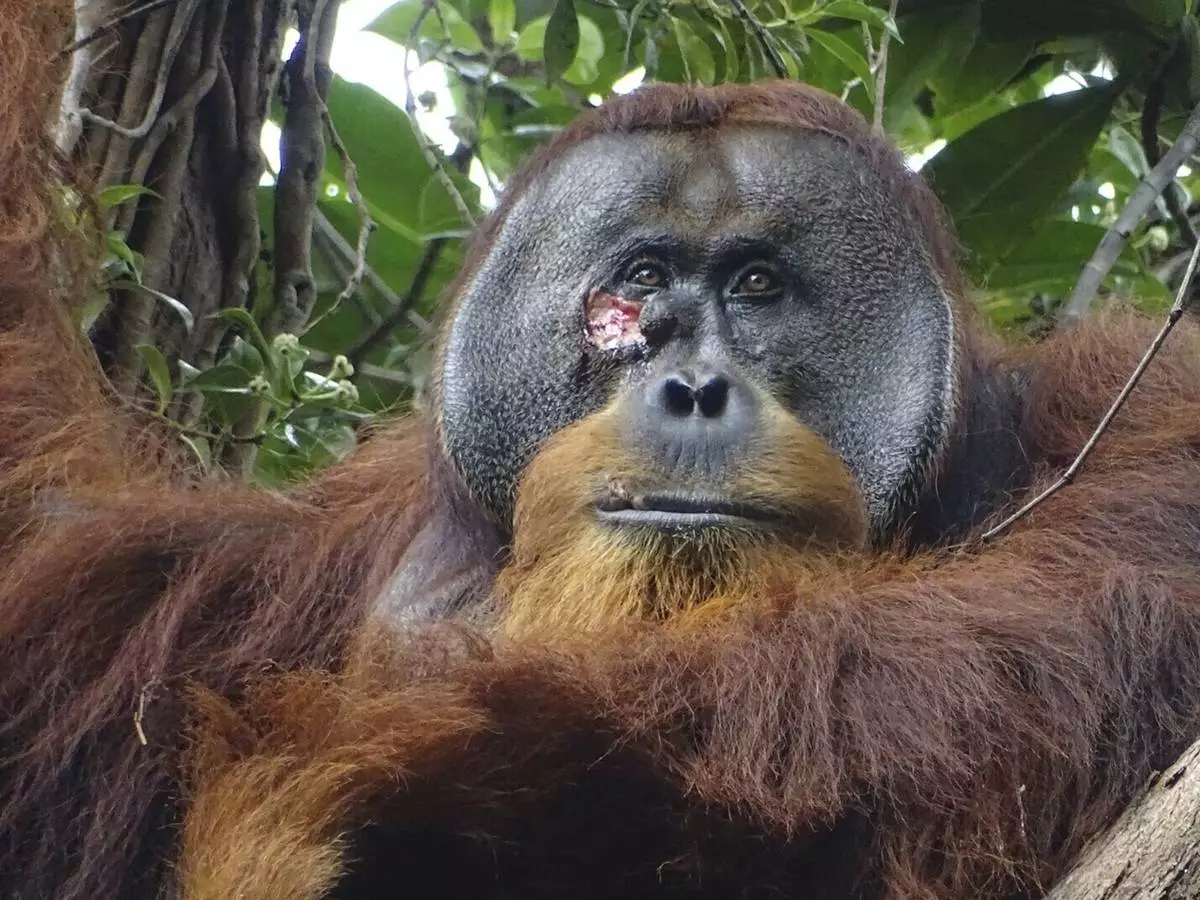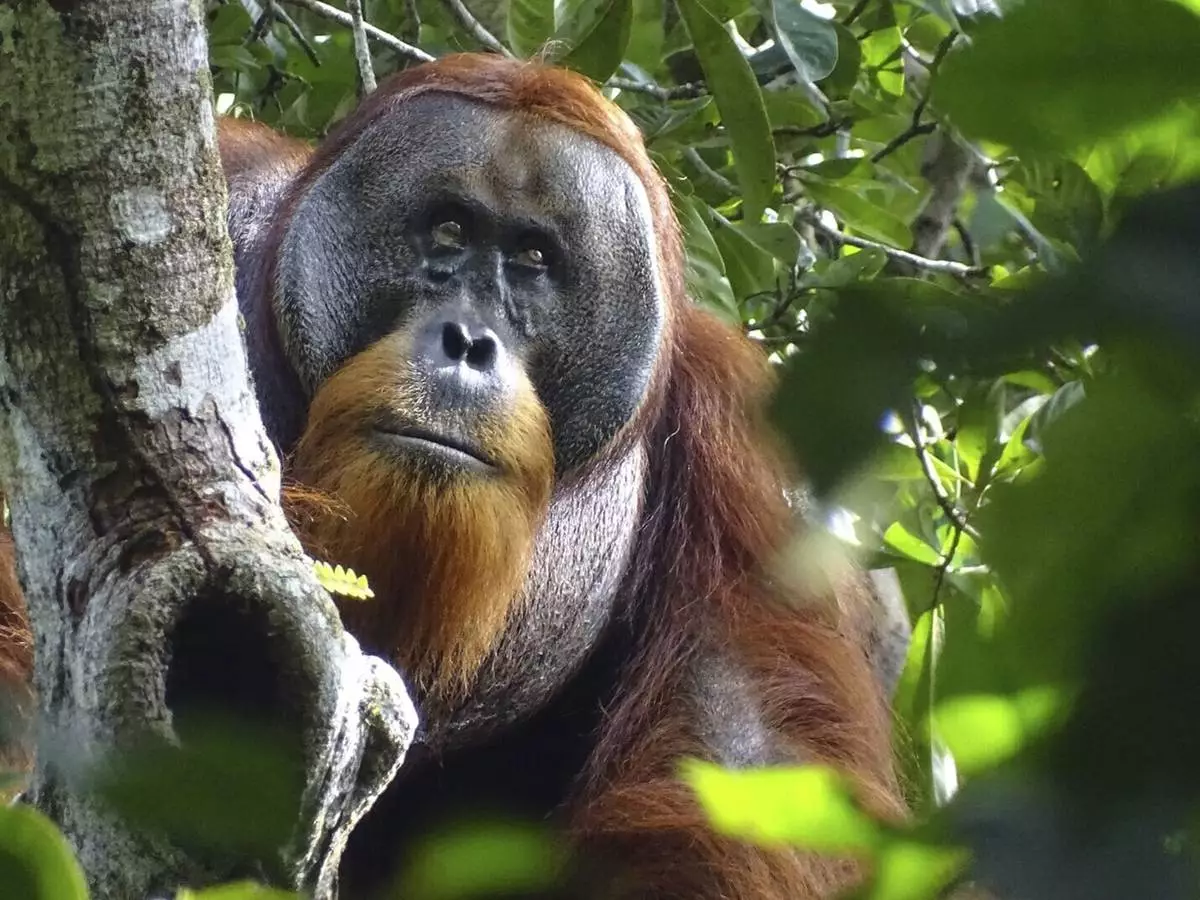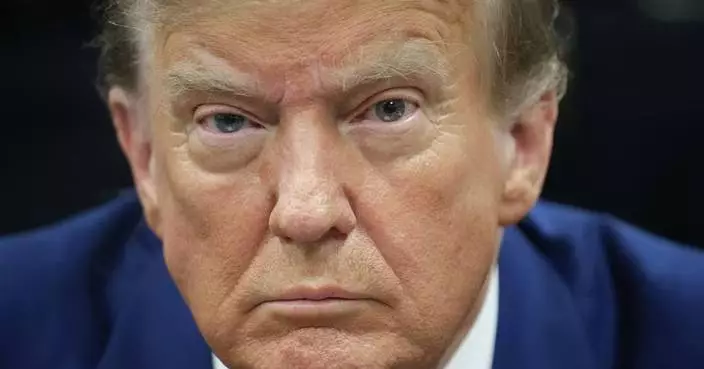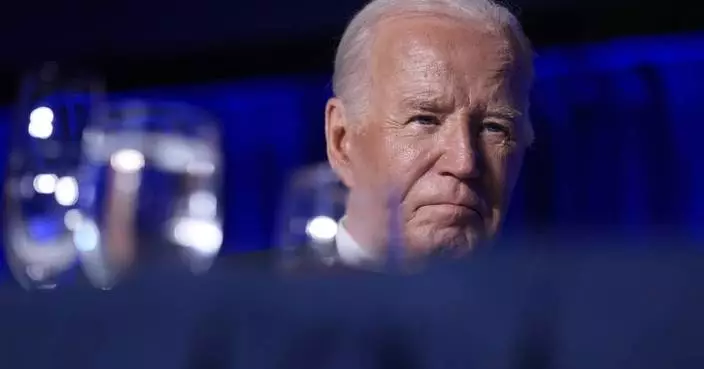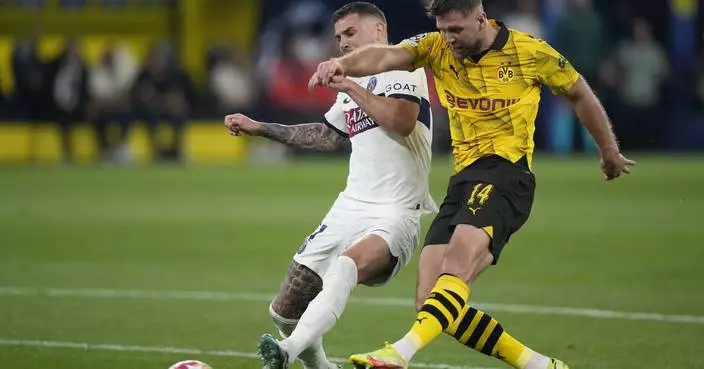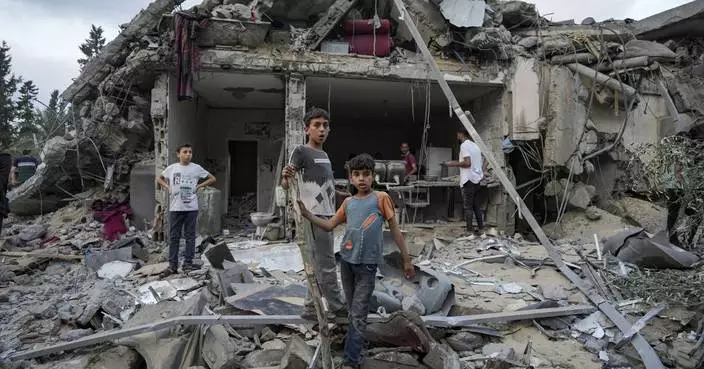AUGUSTA, Ga. (AP) — Camilo Villegas rarely looked so composed while filled with so much emotion. He tapped in for par in Bermuda last fall, straightened and lightly pumped his fist before looking to the heavens.
His first victory in nine years, right when he was on the verge of being left behind in this new era of big money in golf, earned him a two-year exemption on the PGA Tour and a ticket back to Augusta National for the Masters.
None of it mattered in that moment. He was only thinking of Mia, his little one. His little angel. He says he could feel her energy.
Villegas still recalls every detail from being at Nicklaus Children's Hospital in Florida with his wife, Maria, as they waited for the results of a scan on their 18-month-old daughter. The door opened and the room filled with a dozen doctors and staff members.
“You don't need 12 people to give you good news,” he said.
He wept for days. The strength came from his wife, who admonished him not to cry in front of their daughter. She decorated the room in bright colors because she wanted their time with Mia to be filled with happiness. There would be time for tears later.
Mia battled tumors on her brain and her spine for four months. She died on July 26, 2020.
Three years and three months later, there was Villegas — his heart broken, but not his spirit — getting showered with champagne on the 18th green at Port Royal Golf Club until grabbing a bottle and taking a swig.
“This game has given me so many great things, and in the process, it kicks your butt," Villegas said that Sunday at the Bermuda Championship. "Life has given me so many great things, and in the process it kicks your butt, too.”
Villegas went to Augusta National with Rory McIlroy earlier this week to get reacquainted with a course he had reason to believe he might never see again.
The 42-year-old Colombian has always been about big energy, only he was the one bringing it. From what he calls his “magical place” at Club Campestre in Medellin to four All-American years at Florida, he was a dynamic young star on the rise. He was “Spiderman” for the way he sprawled his body inches above the ground to read putts.
Villegas reached as high as No. 7 in the world in 2008 when he won the BMW Championship and the Tour Championship in consecutive weeks. But then he became obsessed with his ranking, with all the wrong things, and his game began to slide.
He won in 2014 to get back to the Masters. That turned out to be an aberration. Then a shoulder injury in 2018 kept him out for nearly two years.
But that was when Mia came into his life, and his heart was full. And then she was gone.
Life kicked him harder than he ever imagined.
“I think everything becomes easier when you understand that's normal,” Villegas said of the hand he and his wife were dealt. "I can sit here and ask myself, ‘Why is Mia not here?’ And you can make it so abnormal and unique. But when you're part of a club of losing a child, you realize the club is huge. And all of a sudden, it's a lot more normal than you think. The ups and downs are normal.
“And when you accept that ups and downs are normal, you can keep going.”
The first step was starting Mia's Miracles, a foundation geared toward helping children and their families going through the same tragedy, making sure they have all they need.
“An amazing amount of hurt and grief,” said Luke Donald. His wife and Maria are close and Donald has roomed with Villegas on the road. "I love how they reframe everything. Even though they only got to spend less than two years with their daughter, they saw it as a gift. And they're doing a great thing with Mia’s Miracles.
“They've turned a (bad) situation into something positive.”
While they sought counseling to cope with the grief, Villegas said his “biggest healer was golf.” The game is a source of frustration even in the best of times, but he found an endless supply of energy from so much support on tour.
“What's easier? Staying at home and being lonely? Or coming out here and feeling like the golf world just became your family?” Villegas said. “They're transmitting energy. Yes, I was thinking about Mia. But it's part of the process.”
Energy is a word Villegas uses all the time, and he has it tattooed on his right wrist with a “+” in front of it — positive energy. What he used to bring is what he now receives. It just didn't translate into the kind of scores that would allow him to keep his card.
The turning point came at Torrey Pines early in 2023 when he missed another cut. He headed straight for the range to wait on his brother, Manny, who caddies for Si Woo Kim. And then Jose Campra came over to say goodbye.
Campra is a golf professional in Argentina who caddies on tour. He was working for Sebastian Munoz of Colombia, who was about to leave for Saudi-funded LIV Golf.
“I said, ‘Before you go, I need your help, bro,’” Villegas said. “He's always analyzed my swing. If you know Jose, you know how polite the guy is. He's not one to intrude.”
They went to the caddie lounge and he told Villegas what to expect. Campra didn't care if Villegas had a card at the end of the year. He told Villegas he would get worse before he got better. And he didn't want him to play too much to keep old habits from creeping in.
“In July I told him, ‘Camilo, I think we’re going to play the Masters again.' He said, ‘Whoa. We need to win.’ And I said, ‘I think you can win,'” Campra said.
The payoff came in November when Villegas was runner-up in Mexico, and then held on to win the Bermuda Championship.
Mia is never far from his mind, and he sees a lot of her spirit in Mateo, their son who was born in December 2021. He looks forward to telling Mateo all about his sister one day.
Adam Scott, another of his close friends, also played in Bermuda. For him, Villegas winning was the best golf story of the year.
“He's been through a lot,” Scott said. “I have massive respect for him and the way he's handled himself through something that, for me, is unimaginable. This guy has got a lot inside him.”
AP golf: https://apnews.com/hub/golf

FILE - Camilo Villegas, of Colombia, hits off the 11th fairway during the second round of the 3M Open golf tournament at the Tournament Players Club in Blaine, Minn., Friday, July 22, 2022. Villegas is back in the Masters for the first time in nine years. (AP Photo/Abbie Parr, File)
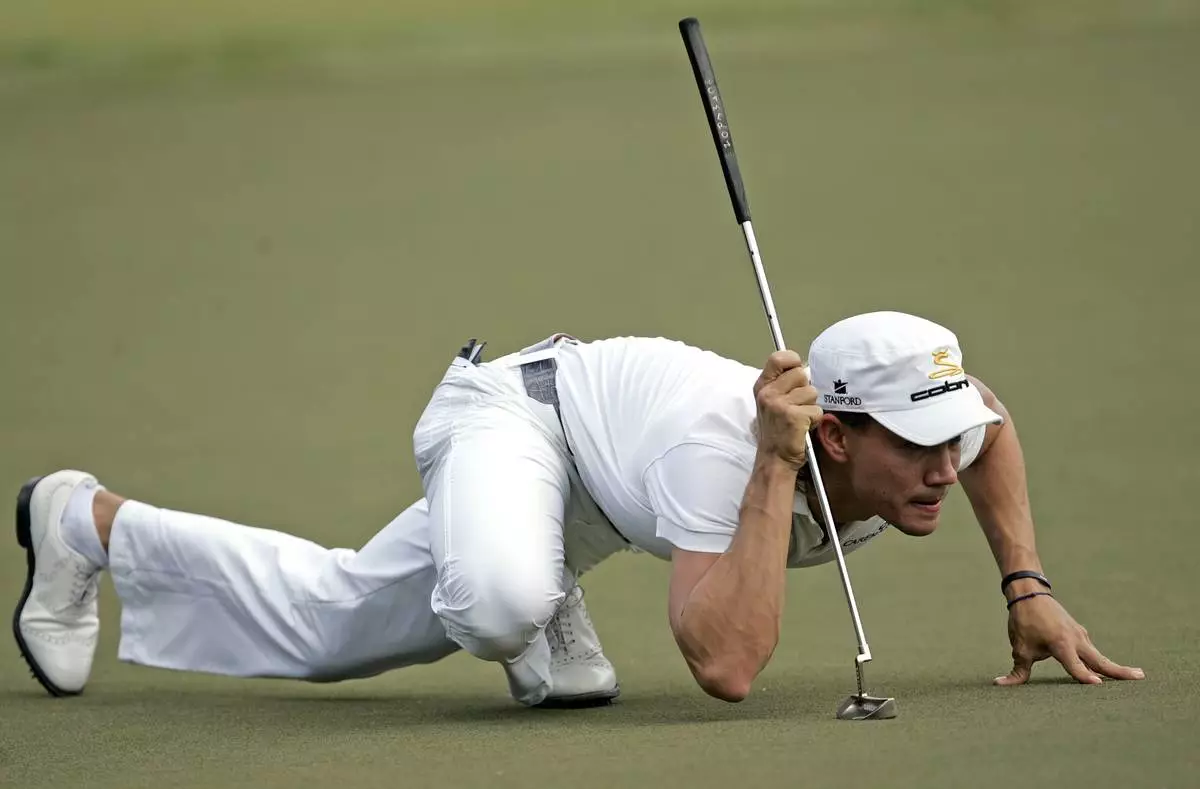
FILE - Camilo Villegas lines up a putt on the third green during the final round of the Tour Championship golf tournament at East Lake Golf Club in Atlanta, Sunday, Sept. 28, 2008. Villegas is back in the Masters for the first time in nine years. (AP Photo/John Amis, File)


